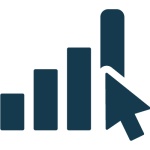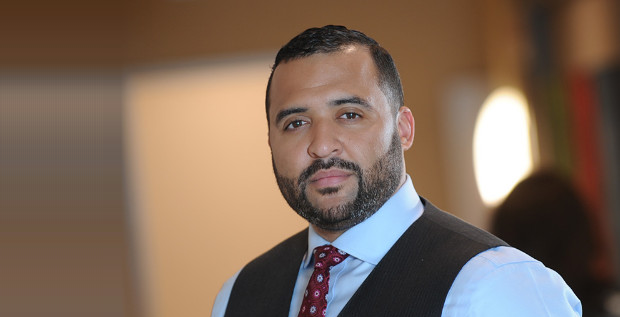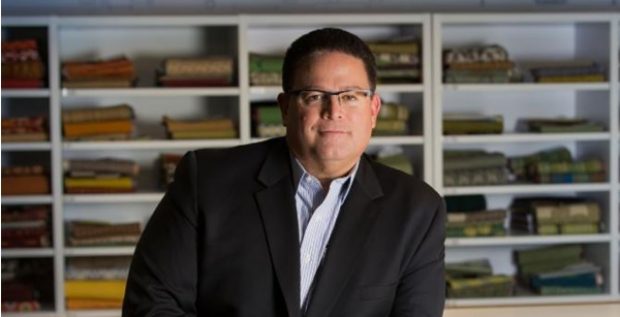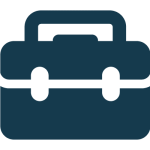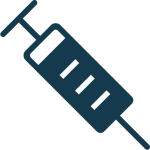Justin Shelby is the CEO and co-founder of Artichoke, a client management application for freelancers and independent professionals. Artichoke simplifies appointment setting, payment processing, client notes, and more into an intuitive, all-in-one platform that works on any mobile device. The app is currently available as a $29/month subscription. A Pro version offering advanced analytics is coming soon. To try out Artichoke with a 14-day free trial, visit getartichoke.com.
Tell us about your background as an entrepreneur.
JUSTIN SHELBY: My background started with a career at Black & Decker. For about 10 years I passed through a variety of sales, marketing, product development, product management, and channel marketing roles, and then I progressed into a growth-stage company called 180s as part of the management team. Over a three-year period, we grew from $16 million to $50 million and then progressed into some real estate projects where we did about $10 million in real estate. Along the way, we opened up two health and wellness centers which started my introduction to the world of the 1099 employee. I really started to get a better understanding for what it was like to live a day in the life of someone in a freelance-type occupation, which has led to the idea behind Artichoke.
Why did you decide to call the app Artichoke?
The name Artichoke mostly comes from the idea that a freelancer has so many things that they need to do to successfully run their business but they have absolutely no one to help them do it. So you imagine all these disparate pieces coming together in one beautiful, symmetrical form—which is what an Artichoke really is: it’s all held together by a common core. We thought it was a great analogy to what we needed to do for the freelancer.
How would you describe your target demographic?
Where we fit in is in the specialist category. We provide a complete solution to run your business, but we’re focused on a particular market segment—and we’re trying to serve that segment better than anyone else—and our segment is the freelancer. At the end of last year, we launched the beta version of the product with the objective of getting maybe 100 users as fast as possible so we could get some really good feedback to understand what we did well, what we didn’t do so well, what we can improve. The result was that we launched in a single vertical market, which was massage therapy, with a single channel marketing channel, which was a trade publication—so a tiny little marketing effort—and ended up with about 170 registrations over a 90-day period from that very, very small effort. It was a very, very encouraging result, and now we are over 250 with the same limited marketing effort.
What are your goals in the long-term?
Our objective is to serve the needs of the broader freelance community. In the United States, there are over 20 million people working as full-time freelancers, and another 50 million that qualify as freelancers—okay, but 20 million of those are doing it as a full-time job. But, for our initial launch, we wanted to focus our limited marketing dollars in on a single vertical. We chose massage therapists because there were 130,000 or 140,000 of them in the United States and they have a very high rate of self-employment as reported by the Bureau of Labor Statistics. So it was the perfect combination of a specific market with a high rate of self-employment.
Where we are right now is—based on the feedback we got from the beta launch—we’re building out a new feature for the product, which we have just gotten funding to do, and we’re working on the onboarding process to make it easier for customers when they first log in—that very first moment that they log in—to do a better job, kind of handholding them through the first two or three minutes of their experience with us so that they can immediately start using the product successfully.
What were your considerations for building the Artichoke brand?
The way to build a great brand is having a good channel marketing strategy. Our channel marketing strategy includes partnerships with educators that are bringing people into these occupations so before they sign up their first client, they already know about Artichoke and they are using it to establish thought leadership through editorial placements. They’re having a good digital marketing strategy, expanding trade marketing efforts to multiple associations and publications, and using social media—LinkedIn is especially good, because you can target by occupation—and then the last piece is good old fashioned referrals: how do you serve people so well that they’re excited enough to tell their friends and colleagues? All that stuff ties back into a good brand.
How much is the business worth now?
Just in our initial market of wellness practitioners, with a 10% market penetration in five years, we would be at $44 million but with the broader opportunity of the whole freelance market, just a 1.6% penetration results in a $150 million business.
How have you gone about acquiring funding?
The Accelerate Baltimore Program, funded through the Abell Foundation, was great because it provided just enough seed funding to get the engineering, research, and background work off the ground, but they also brought in various people from different disciplines to work with you and help challenge your ideas and your thinking. There was also an opportunity to network among our community to get out to the broader world of investment capital, and some of the quasi-state, private, public entities. It was a great experience to get a company off the “napkin stage” and into the doing stage.
How did you get started with Betamore?
I heard about Betamore through one of its founders, Greg Cangialosi, who’s a friend. He was telling me all about it, not knowing necessarily what I was working on, and it sounded like a great opportunity to be in an environment where we could be exposed to a lot of different people that—like the Accelerate Baltimore Program—would help expand our thinking and our resources, and it’s completely done that. During my time in Betamore, and really in the very early stages, I knew that if I was going to be in the community space, which is where I work, which means you show up and find whatever available seat or table and, you know, set up your laptop and get going. If you came in and did just that, you really weren’t getting the benefit of being here. It’s been really easy to meet all kinds of people here and a lot of those interactions have led to valuable relationships. On top of that, you’ll just be here working, you know, at any given day and two or three people walk in the door for another unrelated meeting and it’s someone that you may have seen previously a week ago and are meeting about your company, and you get another chance to interact with that person casually and reiterate some of the things perhaps that you discussed at your meeting the previous week. All that stuff, generally you throw it all in the pot and you stir it up, and it’s dramatically different than locking yourself in a closet somewhere in a small office, and just working away at your little thing and not being aware of the possibilities around you.
Connect with Justin on LinkedIn.

